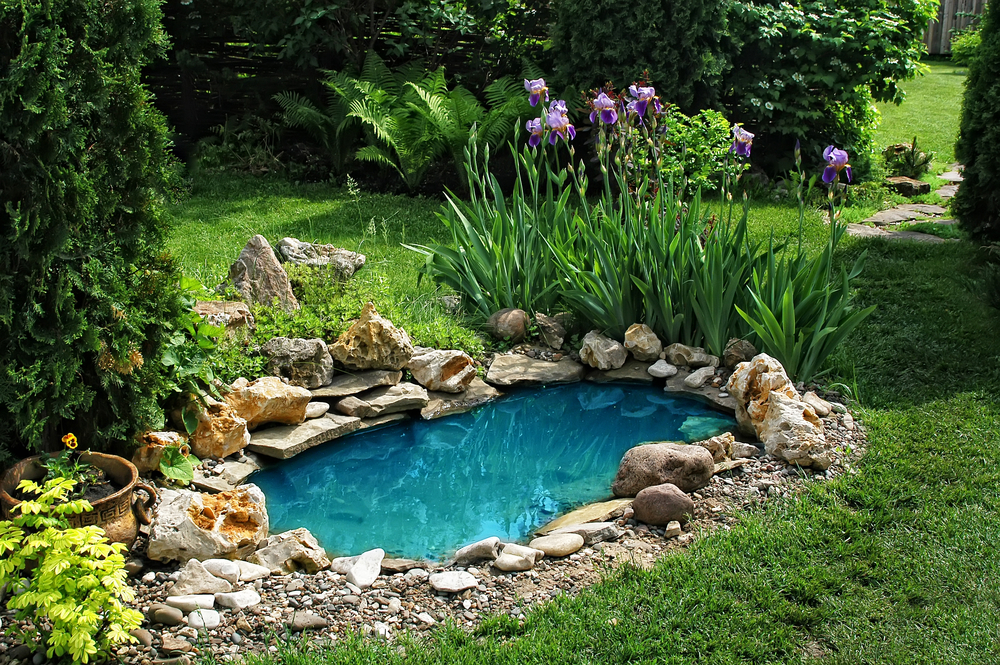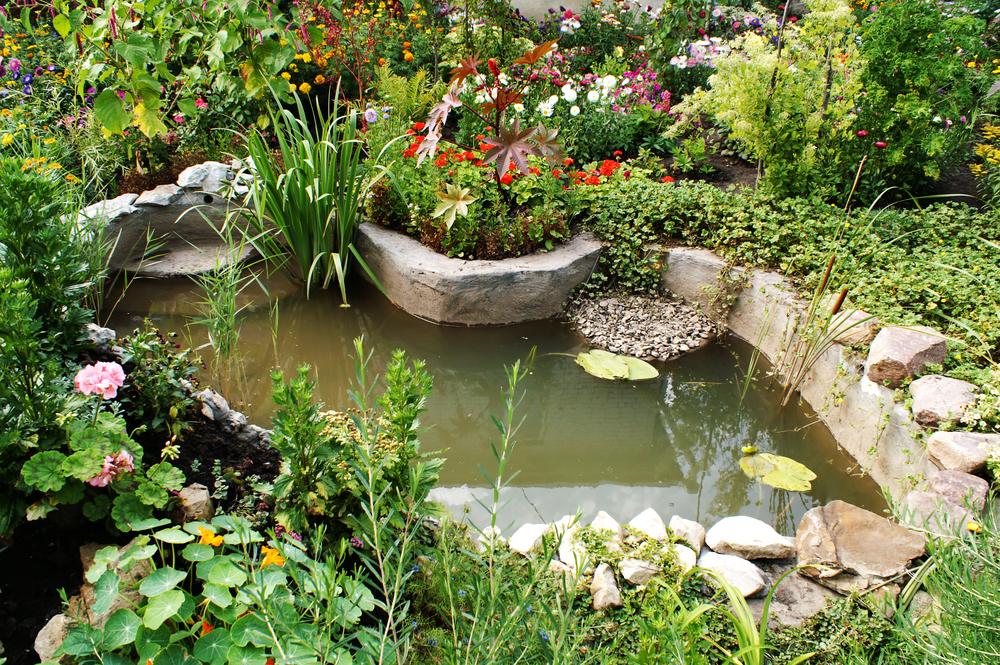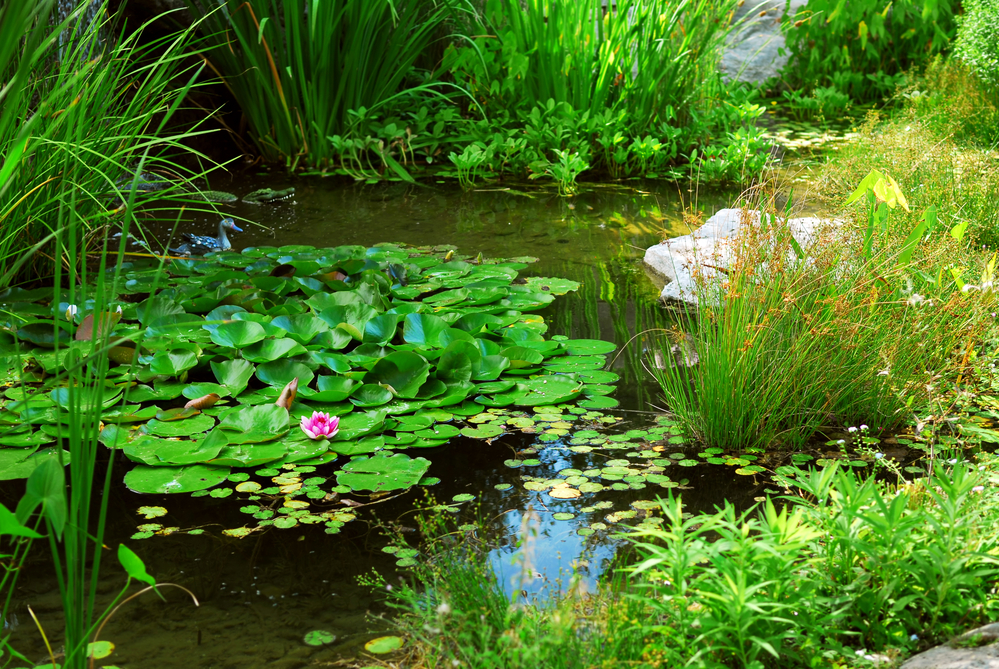
Planning Your Pond
A pond can be a wonderfully transformative space, offering a sense of calm and tranquillity as well as a sanctuary for wildlife; it can bring with it the opportunity for a plethora of beautiful pond plants and wildlife. If you then plan a waterfall – which is perhaps easier than you might think, you can enjoy the peaceful sound of trickling water.
To a lot of people, this is the idea of their outdoor utopia, but the idea of where to begin can be a little overwhelming. With a simple plan however, it can be surprisingly easy to make this vision reality in your own garden.
1. Choosing the location
The first step is to decide on an appropriate space for your pond. You want a space that helps the pond to thrive but also allows you to gain enjoyment from it.
Healthy ponds require a sunny spot, away from trees and sheltered from cold northerly winds. Be wary of too much shade as this can lead to algae growth. The roots of nearby young trees can find their way towards your pond and perforate the liner; leaves can also fall onto your pond which can be a bit of an annoyance.
If you like the idea of sitting and watching the comings and goings of your pond, try to find a happy medium with your favourite place to sit and that you are comfortable.
Sloping garden? No problem you can still go ahead with your dream pond, you’ll just have to cut into the slope or build a retaining wall. If you have a slope you’re in a privileged position for a waterfall, which is certainly worth considering.

2. Deciding on the shape and size
Ponds can be flexible to the space you have available and what you plan to do with them. If space is limited or you don’t want to spend too much you can opt for a smaller, decorative pond which incorporates plants that thrive in these conditions. If fish and other wildlife are important to you then you can consider varying larger sizes of pond to allow them to flourish.
What depth should the pond be?
At the lower size scale, if you want a self-sustaining pond, you want to consider a size of at least 3sq metres. This will provide sufficient oxygen levels for the pond and anything smaller would be lacking.
- A minimum depth for a pond should be 0.6m – for a simple pond with no fish
- Pond with small decorative fish – Minimum of 0.6m – 1m in depth
- Pond with large fish and koi carp – 1m – 1.5m in depth
- Different types of wildlife and plants can have other specific requirements regarding depth and size.
Deeper ponds offer some protection for wildlife in the winter as the water towards the bottom of the pool will be slightly warmer.
What shape should the pond take?
Ponds can come in an almost limitless array of shapes, from standard square, rectangle and circle ponds to more abstract shapes. If you opt for a solid glass fibre shell then you are defined by the shapes available. With a liner the shape of the pond can be manipulated in all sorts of ways.
Use a rope or house to visualise the shape and size of the pond. If possible take an arial view from an upstairs window.

3. Creating a habitat for wildlife
Ponds can attract and support a diverse array of marine, insect and plant life. If you are interested in particular wildlife, you may want to pay more attention to the size and space you dedicate to your pond as different sizes attract different habitats.
- Fish such as koi carp like a natural pond with ornamental plants.
- Common frogs and newts are fine in a pond as small as 1sq metre, however toads and great crested newts like 15 sq metre spaces.
- Dragonflies are happy in small ponds although some species like large spaces of 50sq metres.
As a general rule, if you want to attract more wildlife, you need a bigger pond!
It’s a good idea to consider a mixture of submerged, floating and emergent plants to help support any wildlife. Different types of pond plants can work together to provide a healthy habitat with shade, algae protection and nutrients to create a thriving pond ecosystem.

Types of pond plants
Oxygenating plants
Oxygenating plants are usually submerged and are important for providing food and protection for wildlife. They also help to balance the odds against algae that competes for nutrients and minerals from the water.
Floating plants
Provide a good source of shade for aquatic life, as well as helping to fight against algae by cooling the water temperature and blocking light.
Marginal plants
These types of plants grow at the shallower edges of your pond. Marginal plants provide protection from the weather and predators for frogs and amphibians; they can also attract butterflies, insects and beautiful hummingbirds who like the nectar in these plants. Birds and small mammals may also benefit from the shade and protection when they come to your pond to drink and bathe.
Pond plants don’t just benefit marine life however, they add beautiful colours and vibrancy to your pond. Always use native plants, and not those from the wild.
4. Decorative features
Take time to consider everything you want from your pond. Could you include a water feature in your plans? Not only would a waterfall create a wonderful atmosphere, it can also be good for your pond, incorporating air.
Do you like spending time outdoors in the evenings? Consider pond lights and the need for electricals. If you are going to install a fountain or waterfall you’ll need to power the pump. This could be achieved with a permanent underground cable from the house. This should be carefully planned by a qualified electrician to ensure your safety. Avoid electrics running out of doors or windows, it’s always best to install a permanent circuit; these circuits should always be installed in toughened cables at least 50cm below ground level.
5. Safety
It’s important to consider the safety of a pond, particularly if there are small children around. To keep young children safe the pond could be raised, rather than at ground level. A shallower pond – although this would restrict the ability for fish; or install a low fence around the pond.

